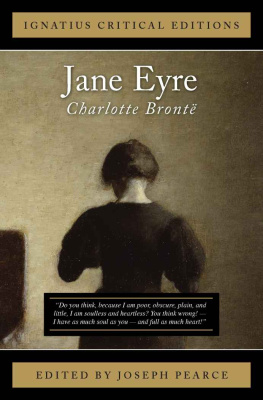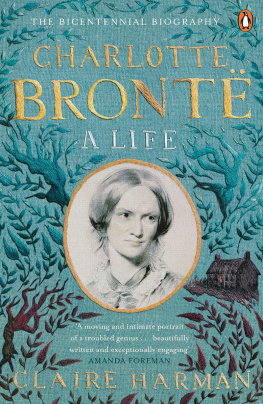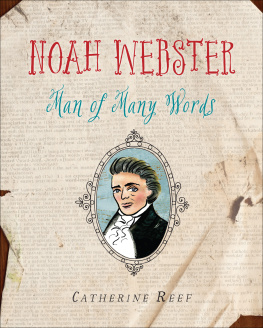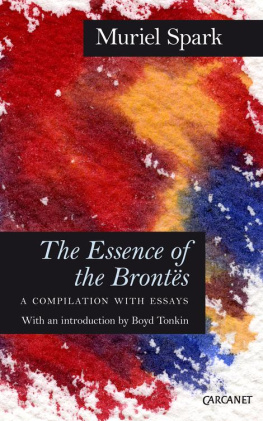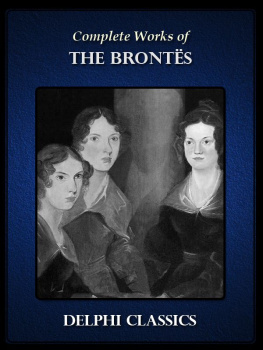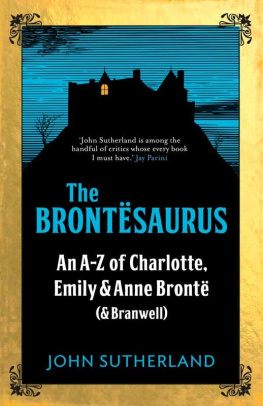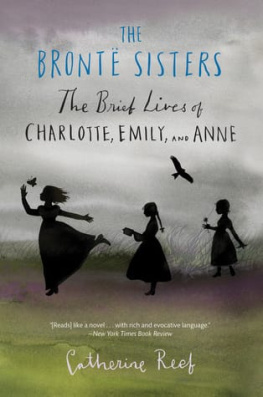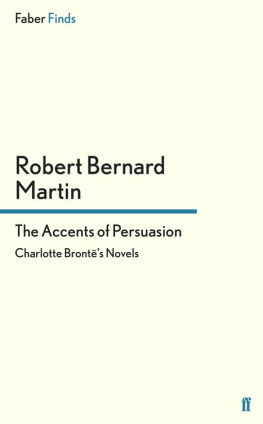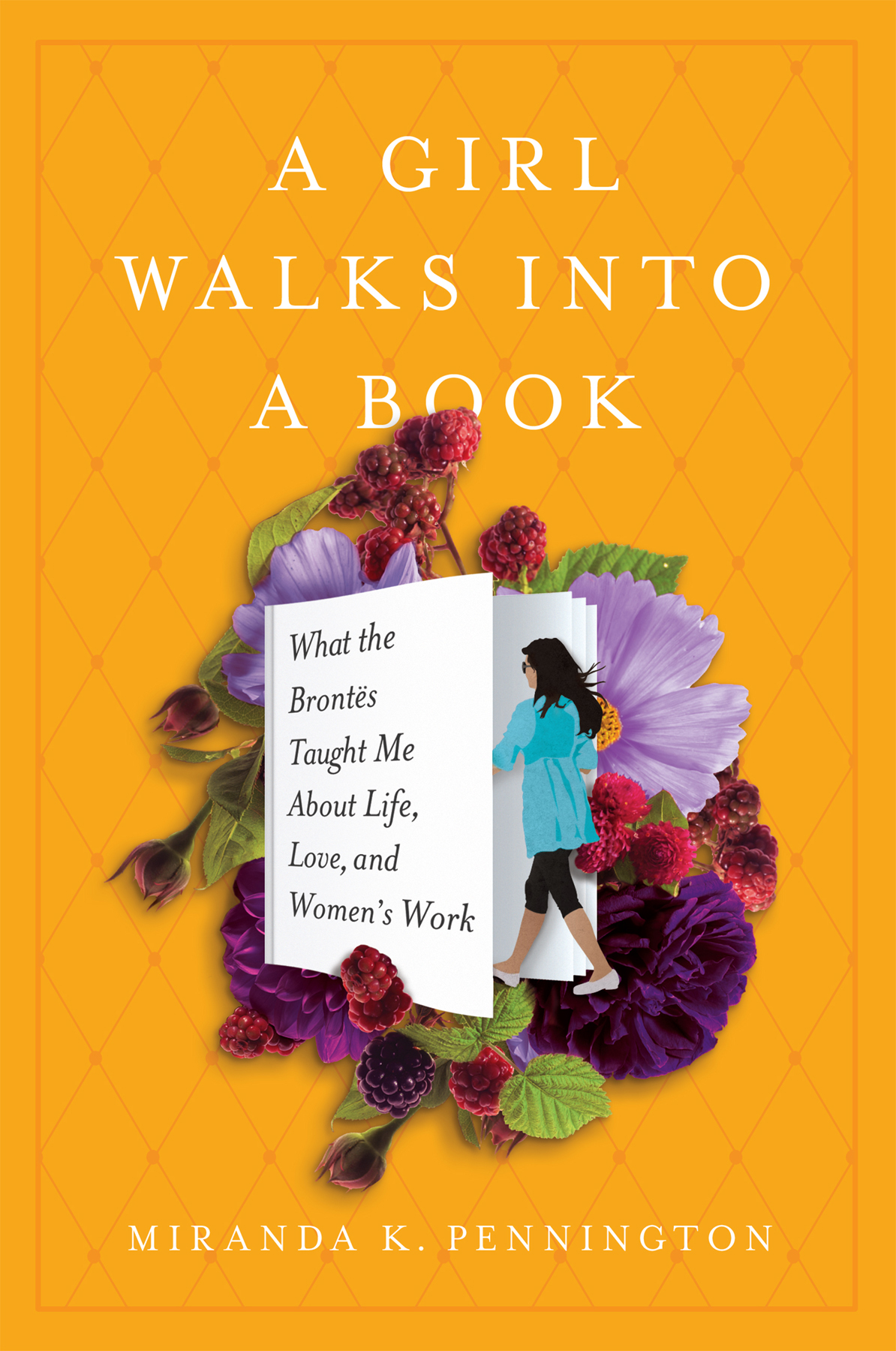Copyright 2017 by Miranda K. Pennington
All rights reserved. No part of this book may be reproduced or transmitted in any form without written permission from the publisher, except by reviewers who may quote brief excerpts in connection with a review.
Library of Congress Cataloging-in-Publication Data for this book is available.
Published by Seal Press, an imprint of Perseus Books, LLC, a subsidiary of Hachette Book Group, Inc.
Ive been watching Miranda Pennington happen for some time. Her first book is all I could hope for, as a fan and a fellow Bront girl: As doggedly funny and practical as its heroines, perpetually surprising, and containing perhaps the worlds first impassioned defense of Anne. (Wait. Were we supposed to care about Anne?) Read it on its own, and take it as a guide on your next tour through the eternally useful Bront works.
Sady Doyle, author of Trainwreck: The Women We Love to Hate, Mock, and Fearand Why
In Miranda Penningtons telling, her relationship with the Bronts and their work is an epic love story, as real, reciprocal, and life-altering as they come. Warm, smart, and very funny, A Girl Walks into a Book offers a version of the experience it describes: entry into a singular world and a lasting friendship.
Michelle Orange, author of This Is Running for Your Life
Miranda Penningtons literary memoir is a necessary book. While there have been many books about the Bront sisters, Penningtons is the first to define their influence on a new generation of young women. Whether writing about Charlotte Gainsbourg, romantic confusion, or visits to the moors, Pennington is a witty, charming, candid observer of female rebellion, past and present. A Girl Walks into a Book champions the strange, beautiful magic of the Bronts, while establishing Pennington herself as a daring, unforgettable heroine.
Rebecca Godfrey, author of The Torn Skirt and Under the Bridge
One may say of Currer Bell that her genius finds a fitting illustration in her heroes and heroinesher Rochesters and Jane Eyres. They are men and women of deep feelings, clear intellects, vehement tempers, bad manners, ungraceful, yet lovable persons. Their address is brusque, unpleasant, yet individual, direct, free from shams and conventions of all kinds. They outrage good taste, yet they fascinate. You dislike them at first, yet you learn to love them. The power that is in them makes its vehement way right to your heart.
G. H. Lewes, from an unsigned 1853 review, Leader
For my family
: | The Bront family tree |
: | Cover page of Charlottes Young Mens Magazine, August 1830 |
: | Charlottes tiny books |
: | Morning, from a Young Mens Magazine |
: | The Eyre family tree |
: | Doodles in the flyleaf of Goldsmiths Geography |
: | Cartoon of Charlotte waving |
I have reproduced all misspellings, odd grammar, and weird or missing punctuation used by the Bronts, their friends, and correspondents, following the lead of Juliet Barker and Margaret E. Smith. Where either of these exceptional scholars made conjectures on missing words or phrases, I have incorporated their text.
T his is a love story. Charlotte Bront and her sisters loved to write, and I fell in love with their words on the page, and I have been looking for that kind of love in and out of books ever since. And maybe you too have fallen in love with a Jane Eyre or a Paul Emanuel or, Heaven help you, a Heathcliff, and so you will know exactly what I mean.
Let me be clear, I am not a fairy-tale-magical-wedding-day happy-ever-after sort of person. My favorite fairy tales are the weird ones, where the girl who trod on a loaf gets sucked underground for her hubris, or one of the seven brothers straightens his hat and freezes the world, or dogs with dish-sized eyes wait for the soldier to strike the tinderbox, or the princess weaves coats of flax for her swan brothers. At the end of these stories, the heroines just lucky not to be dancing herself to death in a pair of bewitched shoes. That spiky strangeness is what I like most about them. When it came to my own ever-after, perhaps my expectations were unconventional, but I had still wanted a storybook ending, one way or another. I had been ecstatic to find someone with a winning smile who laughed at my jokes and wanted me around. I thought we were building a life together. But after one too many disappointed expectations and undelivered promises I finally became suspicious that it wasnt going to happen. Whether I was unworthy, the person I had picked was too flawed, or the story Id based my dreams on was a liesomething was broken.
As I got ready to leave the apartment that had finally started to feel like ours, my battered and beloved copy of Jane Eyre was the last book I packed, in the last bag I lined up by the door. I was leaving, taking only what I had brought with me and could call my own. It was a dark, bitter moment with one flicker of solace: Charlotte Bront would have approved.
When I first came to the Bronts, I was a child, nave and unwary. The old-fashioned prose and thick spine of Jane Eyre were promising; lots of the books written for kids my age (ten or so) were like potato chips, gone in a flash and leaving nothing behind but a greasy residue. I waded into the opening pages, read about a young girl huddled in a window-seat reading Bewicks History of British Birds, and was intrigued. Id spent my share of hours curled up reading while adults talked, and I found the notion of a window-sill hidden by curtains especially romantic. My library was under the fluorescent lights of a basement playroom where I escaped my toddler brother, who was too little to climb downstairs. Rather than the finely furnished halls of Gateshead that Jane Eyre longed to escape, I had a battered sleepaway couch, a plastic foosball table, a hot pink wooden toy box with a chalkboard, and an array of particleboard bookcases that groaned under the weight of Louisa May Alcott, Mark Twain, The Brothers Grimm, and Beverly Cleary. Despite these drastic differences in our circumstances, I related to Janetheres no accounting for the affinity one lonely kid has for another.
After that first attempt, I actually did toss Jane Eyre to the floor and heard the pages skitter as they hit the linoleum.
But the book was so satisfyingly weighty. Even as I hurled it off the bed, it seemed like a book that should matter. I kept picking it back up. I stared down Mr. Brocklehurst. I endured the boarding school. I crossed my fingers when Jane dared to advertise for a new position. Eventually, I found that I liked it, despite its darkness, despite Janes trials, which I took personally. To despise Jane was to despise me. By the time I finished it, I had come to love Jane Eyre. I was a chubby tomboy with a mushroom cut, who always talked too fast. I liked reading fantasy epics and singing along to show tunes in the car. But



